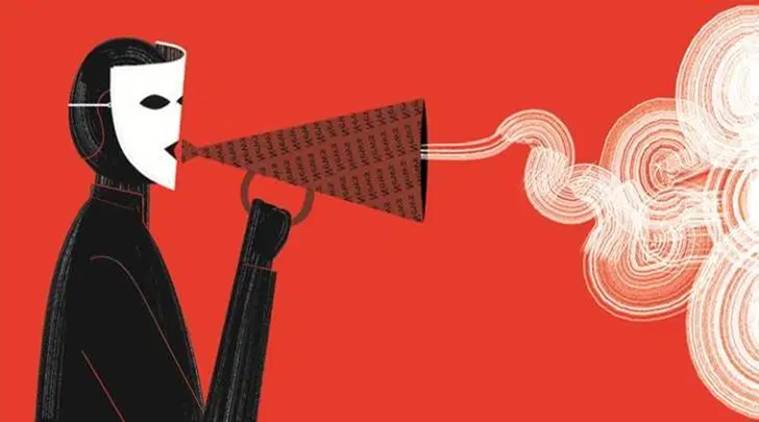 Nations are fighting more than the virus. They are also up against the contagion of misinformation, which is spreading panic, anxiety and inaccurate perceptions of risk. (Illustration: C R Sasikumar/File)
Nations are fighting more than the virus. They are also up against the contagion of misinformation, which is spreading panic, anxiety and inaccurate perceptions of risk. (Illustration: C R Sasikumar/File)
Till a few months ago, when people thought about how to make the world a better place, they thought about curing diseases like HIV/AIDS, tuberculosis and malaria, through access to medicines and public health interventions. Today, a disease from a new pathogen, COVID-19, has challenged humanity’s ability to intervene and manage the crisis it has caused. But, nations are fighting more than the virus. They are also up against the contagion of misinformation, which is spreading panic, anxiety and inaccurate perceptions of risk.
Given the novelty of the virus, a lack of information and its tremendous impact on health, there is a widespread appetite for information on COVID-19. With various sources (both institutional and individual) attempting to fill the information gaps, we often attend to contradictory information circulating on various social media platforms. The outbreak requires the global community to adopt a two-pronged approach to tackle both information overload and misinformation about the virus.
Misinformation is information not based on facts that is inadvertently sent to influence public opinion or obscure the truth. Its perils are far-reaching and carry serious implications. Recently, misinformation on video blogs and social media posts purportedly about special trains being made operational for taking migrant labourers home amidst the lockdown went viral, resulting in a public health scare.
In a recent article, Michelle Williams, Dean of the Harvard T H Chan School of Public Health and K Viswanath, professor at the Harvard T H Chan School of Public Health, discuss five ways of combating misinformation: Educating oneself about COVID-19 to be able to dismiss any untrue information; pausing and verifying before sharing or forwarding by tracing the source; maintaining a healthy dose of “scepticism” by not spreading/forwarding messages that provoke fear and intolerance; accepting a level of prevailing uncertainty as researchers are still learning more about the virus and avoid filling the gap with misinformation and to stay informed by checking credible and reliable sources of information.
This evidence-based advice is particularly relevant to, India where social media use is widely prevalent. Social media is a powerful tool that has the reach to influence people’s opinions and actions. At the outset of the pandemic, videos of imposters claiming to be established health experts started circulating over social media. Videos on various theories, often incorrect, on the origin of the virus, false ideas on protecting oneself by consuming a high dose of chloroquine medication, and videos demonising a particular community for the spread of the virus have also gone viral.
Several entities are trying to counter the misinformation. The government has taken measures to curb the menace on social media by uploading information to counter myths and frequently asked questions on websites such as mygov.in and those of ICMR and the Ministry of Health and Family Welfare. The Department of Telecommunications has ordered all telecom firms to supersede ringtones with an informative audio clip on coronavirus as a pre-call announcement. To tackle misinformation, “MyGov Corona Helpdesk” and a WhatsApp chatbot have also been launched. The private sector is also supporting the government’s efforts to curtail the spread of misinformation. For example, WhatsApp tightened its message forwarding limits and security settings in response to the influx of COVID-19 related misinformation circulation.
Despite intensive efforts, there is a need to do much more. Verifying genuine accounts, boosting the visibility of credible sources of information and enhancing research funding for tackling misinformation could be steps in this direction. Social media giants must implement robust in-house mechanisms to address misinformation. Researchers must be provided access to data controlled by social media companies for analysing the effect of misinformation and generating the tools to encounter it.
In an “infodemic” crisis, we advocate a “cocktail approach” to tackle the spread of misinformation, where systemic initiatives have to be leveraged with individual efforts. At an individual level, as advised by Harvard T H Chan School of Public Health’s India Research Center’s dashboard on coronavirus, the “THINK twice” mantra is a guide. Ask yourself these questions before forwarding messages: Is it truthful; how does it help; does it inspire; is it necessary and is it kind.
There is also a need to mobilise a movement which offers civil society an opportunity to come together actively in community-led actions. These could include building awareness campaigns, and committing themselves towards a common goal of fighting misinformation. The need of the hour is to protect the resilience of our information systems by curbing misinformation.
Kant is project manager and Golecha, project coordinator at the Harvard T H Chan School of Public Health — India Research Center. Views are personal